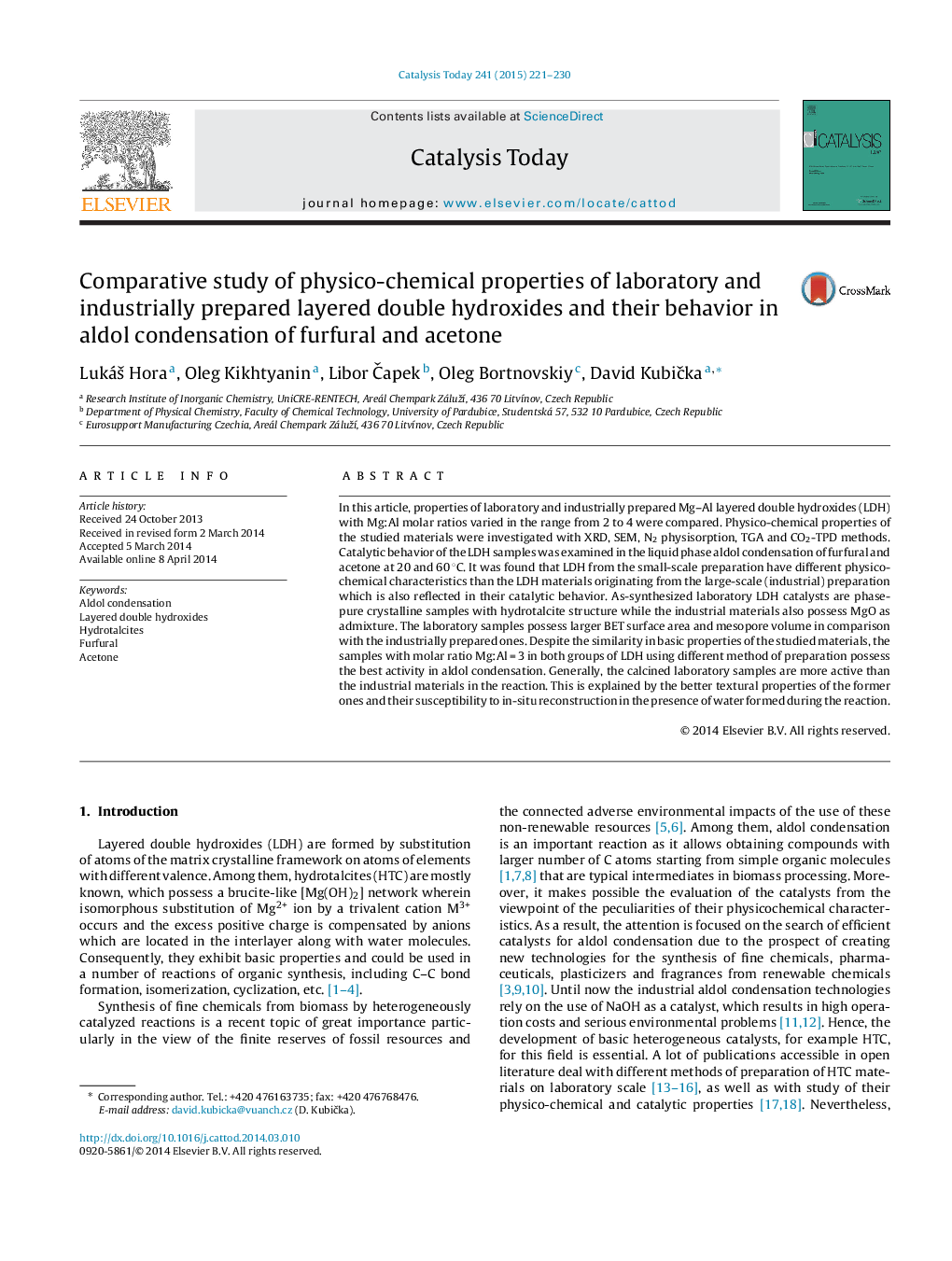| Article ID | Journal | Published Year | Pages | File Type |
|---|---|---|---|---|
| 54339 | Catalysis Today | 2015 | 10 Pages |
•Laboratory hydrotalcites outperform industrial ones in furfural-acetone aldol condensation.•Increased mesoporosity and ability to in-situ structure reconstruction are crucial.•Phase purity of hydrotalcites is a key parameter.
In this article, properties of laboratory and industrially prepared Mg–Al layered double hydroxides (LDH) with Mg:Al molar ratios varied in the range from 2 to 4 were compared. Physico-chemical properties of the studied materials were investigated with XRD, SEM, N2 physisorption, TGA and CO2-TPD methods. Catalytic behavior of the LDH samples was examined in the liquid phase aldol condensation of furfural and acetone at 20 and 60 °C. It was found that LDH from the small-scale preparation have different physico-chemical characteristics than the LDH materials originating from the large-scale (industrial) preparation which is also reflected in their catalytic behavior. As-synthesized laboratory LDH catalysts are phase-pure crystalline samples with hydrotalcite structure while the industrial materials also possess MgO as admixture. The laboratory samples possess larger BET surface area and mesopore volume in comparison with the industrially prepared ones. Despite the similarity in basic properties of the studied materials, the samples with molar ratio Mg:Al = 3 in both groups of LDH using different method of preparation possess the best activity in aldol condensation. Generally, the calcined laboratory samples are more active than the industrial materials in the reaction. This is explained by the better textural properties of the former ones and their susceptibility to in-situ reconstruction in the presence of water formed during the reaction.
Graphical abstractFigure optionsDownload full-size imageDownload high-quality image (144 K)Download as PowerPoint slide
